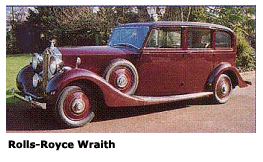|
until national leagues resumed in the 1946-47 season, when
their neighbours and great rivals Liverpool won the title.
Manchester United, who had bounced straight back to be promoted the
previous season, celebrated their quick return to the top flight
with a 4-1 win over Birmingham City, but won only 10 more of their
42 games and lost 15 to finish in the bottom half of the table.
Chelsea won 12 but lost 21 and escaped relegation to the Second
Division by a single point. Portsmouth would hold the FA Cup for the next seven years after beating Wolves - watched by 99,370 spectators at Wembley. I wonder how many of them lived to see the stadium demolished in 2003. The third World Cup was played in France, again without the participation of the British national teams who were yet to enter the competition. With war looming it was another propaganda triumph for Mussolini. Italy beat Hungary in the final to retain the trophy they had won on home ground in 1934. That season England, whose players had received a rise in match fee from £6 to £10, played Italy in Milan. The German referee chose to ignore several blatant hand-balls, one of which was a ‘goal’ punched into the net, after which the Crown Prince of Italy offered to go onto the pitch with FA Secretary, Stanley Rous, to explain the ‘error’ to the referee. Within 15 months football would be swept aside by the war and it would be 12 years before the World Cup was held again. When it was eventually revived in 1950 it returned to South America, where the inaugural tournament had been staged in 1930. Uruguay – who had triumphed in their own capital of Montevideo– were champions again in Brazil. England, competing for the first time, were humiliated. Beaten by 500-1 outsiders – the USA!; they then lost to Spain and were on their way home.  At the 1938 Motor Show that October the new Ford Prefect was
unveiled at a cost of £140; Singer is now associated with a sewing
machine, but the £240 car of that name came with a 25,000-mile
guarantee - against a re-bore! A 7-seater Rolls-Royce Wraith could
be had for £1610 - sixteen times the prize money received by the
Open champion. By the end of the century it would be worth over
£50,000 and the Open Champion could buy six with his prize. At the 1938 Motor Show that October the new Ford Prefect was
unveiled at a cost of £140; Singer is now associated with a sewing
machine, but the £240 car of that name came with a 25,000-mile
guarantee - against a re-bore! A 7-seater Rolls-Royce Wraith could
be had for £1610 - sixteen times the prize money received by the
Open champion. By the end of the century it would be worth over
£50,000 and the Open Champion could buy six with his prize.A car was by now within the reach of the better off professional golfers. The first to have one had been Arthur Havers, followed by Percy Alliss, but, as his son Peter wrote in The Best of Golf : “ -- save at certain clubs, it was not the thing for the professional to have a car that was in any way grander than the average member’s - -.” One of the exceptions to that rule was Henry Cotton who had acquired a racy red 1929 3.6 litre Mercedes Cabriolet, but he was working on the continent at that time where the golf professional was much higher up the social scale than in his homeland. Most British pros were still walking to work, or cycling – like John Burton of Hillside, who did not want the members to know he owned a car. Car ownership was still not in my thinking; financially 1938 was my best season, but my prize money was just £480. Although I had not won a major tournament, I had some good finishes and again made it into the top 12 of the professional averages which qualified me to play in the following year’s Penfold League tournament - and I was still on the verge of selection for the Ryder Cup. At the age of thirty I was poised to break into the big time, but a certain Herr Hitler was about to put an end to that and the 1939 season was to be an anti-climax.
|
